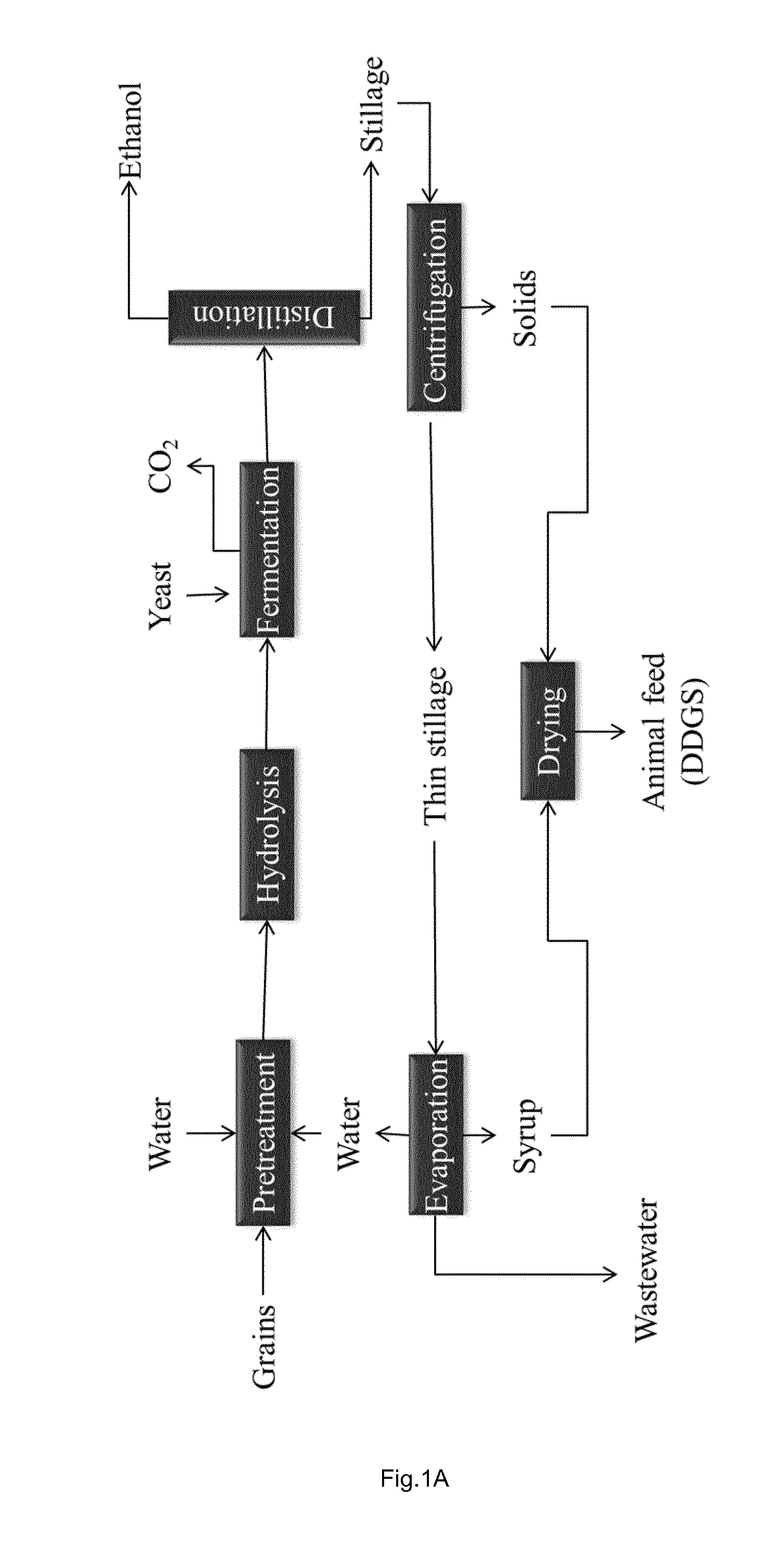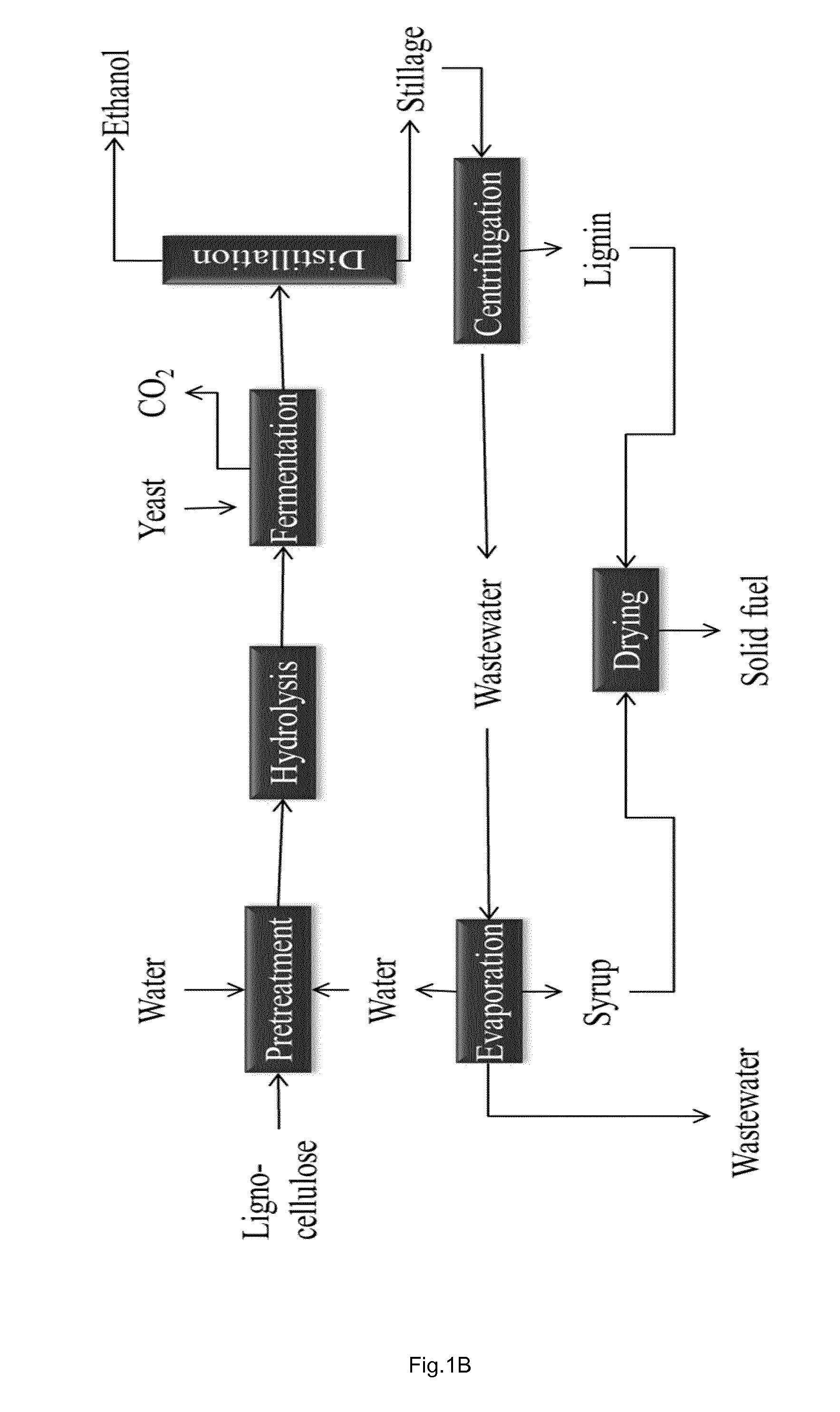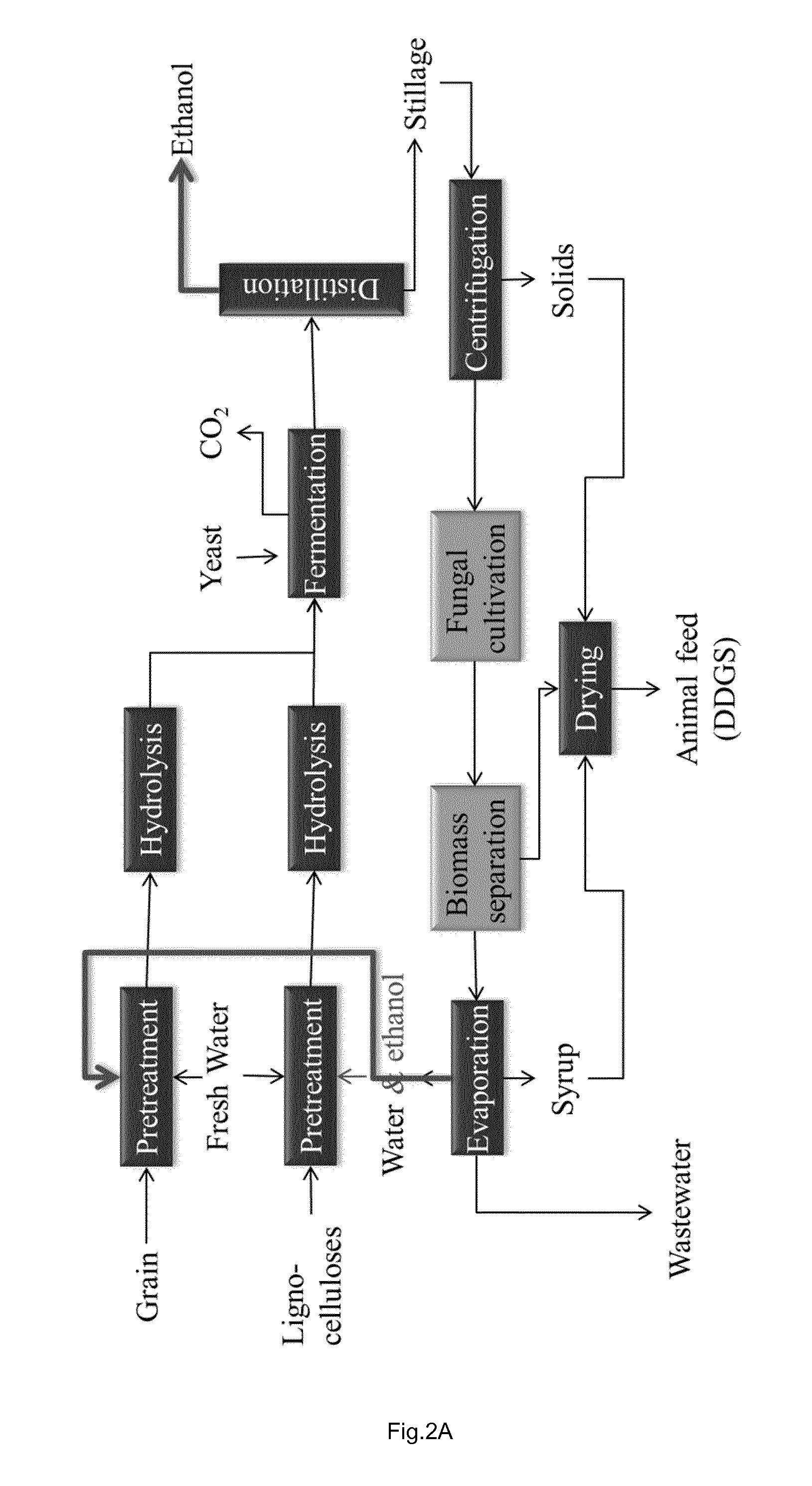Integration of First and Second Generation Bioethanol Processes
a bioethanol and process technology, applied in the field of integration of first and second generation bioethanol processes, can solve the problems of low potential return, high investment cost and uncertainty in the process, and combination of high risk investments (including technological risks and political/political risks) to achieve the effect of reducing the current barriers to process change/investmen
- Summary
- Abstract
- Description
- Claims
- Application Information
AI Technical Summary
Benefits of technology
Problems solved by technology
Method used
Image
Examples
experiment 1
Ethanol and Biomass from Thin Stillage in Lab and Pilot Bioreactor
[0099]Thin stillage is a by-product from dry-mill starch-based ethanol production. Simplified after distillation there are two streams, the top stream with a high ethanol concentration and the bottom stream, containing the residues usually referred to as whole stillage. After removal of the larger solids through centrifugation the remaining liquid is referred to as thin stillage.
[0100]In this experiment, four different Ascomycetes fungal strains have been cultivated on thin stillage: Aspergillus oryzae, Fusarium venenatum, Monascus purpureus and Neurospora intermedia. The strains were compared and evaluated with a focus on ethanol production in shake flasks. All of these fungi were able to grow and also produce ethanol.
[0101]Maxima of 1.9, 1.6, 0.4 and 4.8 g / L of ethanol was achieved from A. oryzae, F. venenatum, M. purpureus and N. intermedia, respectively. Thus, N. intermedia was the most promising strain. Cultivati...
experiment 2
Abstract
[0103]Ethanol processes in dry mills produce ethanol and animal feed from whole grains, where the wastewater after the distillation and separation of solid materials is called “thin stillage”. In this work, similar production of ethanol (3.5 g / L) and biomass (5 g / L) from thin stillage was obtained during batch cultivation of the edible fungus Neurospora intermedia in a 2 m high airlift reactor and bubble column. The fungal biomass, containing 50% (w / w) protein and 12% (w / w) lipids, was rich in essential amino acids and omega-3 and -6 fatty acids. In continuous mode of fermentation, dilution rates of up to 0.2 h−1 could be applied without cell wash-out in the bubble column at 0.5 vvm. At 0.1 h−1, around 5 g / L of ethanol and 4 g / L biomass containing ca 50% protein were produced. The fungus was able to assimilate oligomers in the liquid fraction as well as sugars backbones such as xylan and arabinan in the solid fraction. The inclusion of the current process can lead to the pro...
experiment 3
20 m3 Batch in a 80 m3 Reactor
[0140]Method and Material:
[0141]Cultivation Conditions:[0142]The temperature was kept at 35° C. during cultivation;[0143]The working volume was 20 m3 of thin stillage in a 80 m3 reactor;[0144]The initial pH of thin stillage was 4.0 and it was adjusted to 5.0 with 5.5 L 25% NH3 and around 60 L of 45% NaOH.[0145]Addition of antibacterial solution: 0 hours (5 L), 18 hours (5 L) and 37 h (20 L);[0146]The aeration rate was 0.25 m3 / m3 / min;[0147]No stirring was used;[0148]An inoculum of around 70 L containing ca 40 g / L of fungal biomass was used; the inoculum was prepared in 50% thin stillage supplemented with glucose (100 g / L) and yeast extract (2 g / L) in fed-batch mode in a 26 L bubble column reactor at University of Boras;
[0149]Result:
[0150]The content of the fungal biomass produced was analyzed for protein, fat and two selective essential amino acids. See table 6 for results:
TABLE 6FungalNon purified fungalbiomassbiomassProtein, (% of DS)56.20%51.6%Fat, (%...
PUM
| Property | Measurement | Unit |
|---|---|---|
| volume | aaaaa | aaaaa |
| pH | aaaaa | aaaaa |
| temperature | aaaaa | aaaaa |
Abstract
Description
Claims
Application Information
 Login to View More
Login to View More - R&D
- Intellectual Property
- Life Sciences
- Materials
- Tech Scout
- Unparalleled Data Quality
- Higher Quality Content
- 60% Fewer Hallucinations
Browse by: Latest US Patents, China's latest patents, Technical Efficacy Thesaurus, Application Domain, Technology Topic, Popular Technical Reports.
© 2025 PatSnap. All rights reserved.Legal|Privacy policy|Modern Slavery Act Transparency Statement|Sitemap|About US| Contact US: help@patsnap.com



